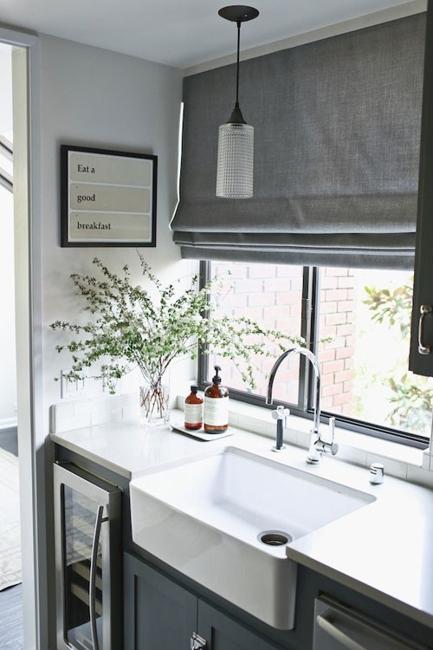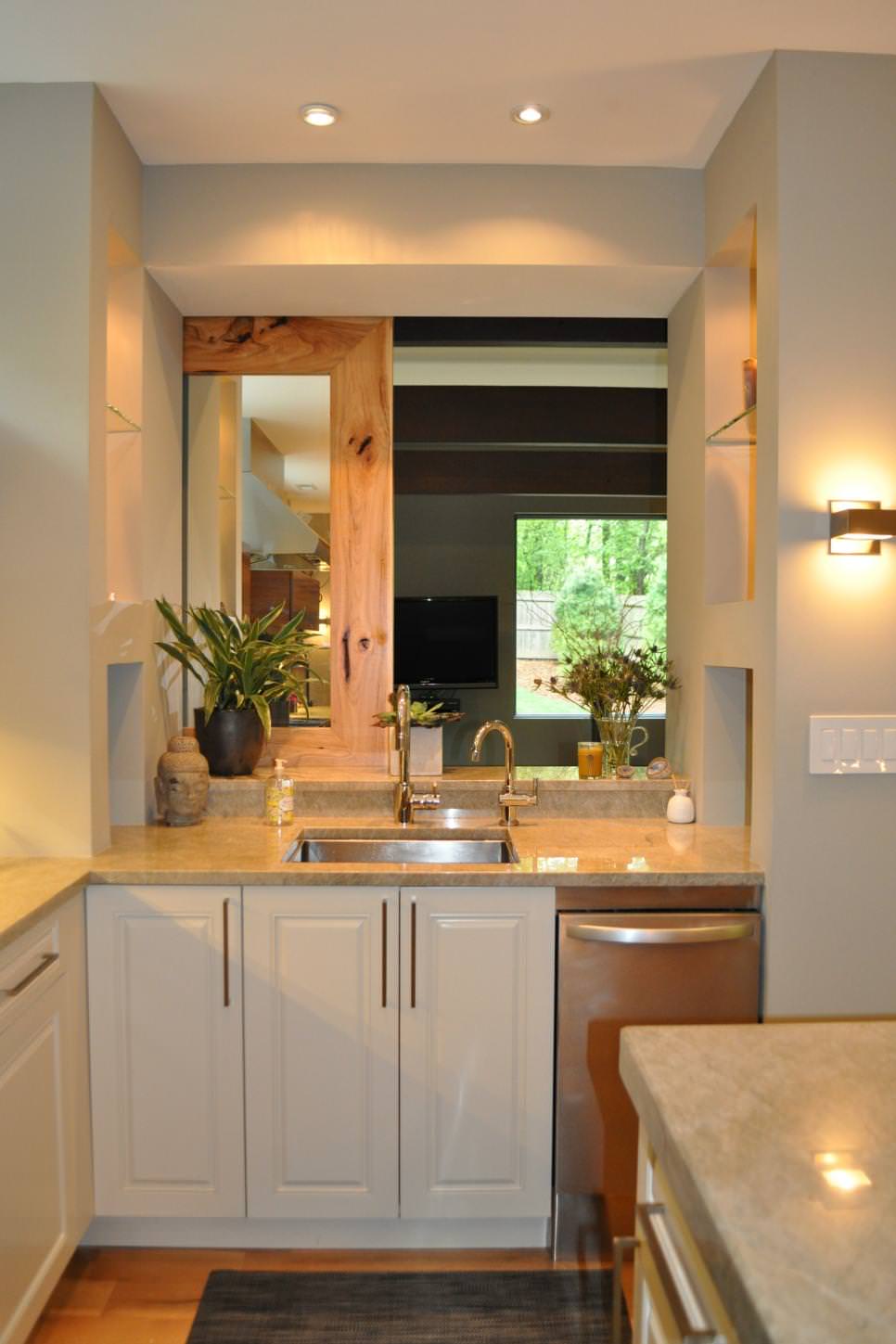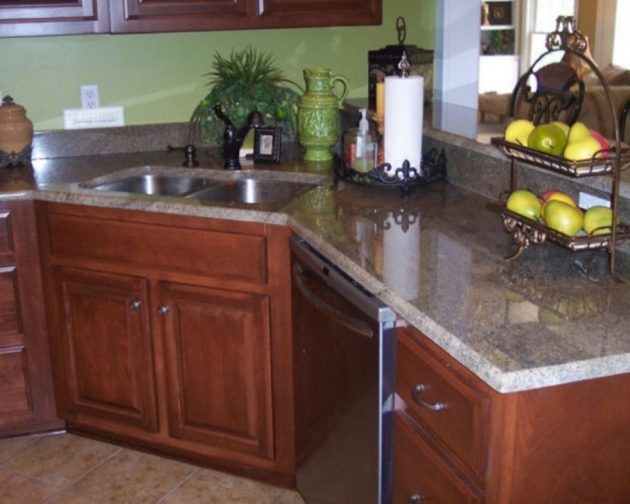Importance of Selecting the Right Sink for Small Kitchens
Selecting the right sink for a small kitchen is a crucial decision that can significantly impact both functionality and aesthetics. In compact spaces, every inch matters, and the sink is no exception. A well-chosen sink can enhance efficiency, optimize space, and contribute to a visually pleasing kitchen environment. Conversely, an ill-fitting or poorly designed sink can lead to clutter, inconvenience, and a less enjoyable cooking experience.
The sink is one of the most frequently used fixtures in any kitchen, serving as a central hub for food preparation, cooking, and cleaning. In small kitchens, where countertops and storage space are limited, it is essential to choose a sink that maximizes utility without overwhelming the space. A carefully selected sink can streamline daily tasks and make the kitchen feel more spacious and organized.

Moreover, the sink’s size, shape, and installation type can influence the overall layout and design of the kitchen. By considering these factors, homeowners can create a harmonious and efficient kitchen that meets their specific needs. Whether you are cooking for one or entertaining guests, the right sink can make a significant difference in the ease and enjoyment of kitchen activities.
Finally, a well-chosen sink can add value to your home. Prospective buyers often look for functional and aesthetically pleasing kitchens, and a thoughtfully selected sink can be a selling point. Investing in a high-quality, well-designed sink ensures long-term satisfaction and enhances the overall appeal of your kitchen.

Types of Sinks Suitable for Small Kitchens
When selecting a sink for a small kitchen, it is essential to explore various types and styles to find the one that best fits your space and needs. One popular option is the single-bowl sink. Single-bowl sinks offer a spacious basin without the divider found in double-bowl sinks, making them ideal for washing large pots and pans. This design maximizes the available space, making it a practical choice for compact kitchens.
Another excellent choice for small kitchens is the undermount sink. Undermount sinks are installed beneath the countertop, creating a seamless and clean look. This installation type not only saves counter space but also makes cleaning up easier, as there are no edges to catch debris. Undermount sinks are available in various sizes and shapes, allowing homeowners to find a model that fits their kitchen layout perfectly.
Corner sinks are a unique and space-saving solution for small kitchens. Installed in the corner of the kitchen counter, these sinks utilize an often overlooked area, freeing up valuable counter space. Corner sinks are particularly useful in L-shaped or U-shaped kitchen layouts, where they can enhance the kitchen’s flow and functionality. These sinks come in various designs, including single and double-bowl options.
For those who prefer a more traditional look, a compact farmhouse sink can be an excellent choice. While farmhouse sinks are typically associated with larger kitchens, there are smaller models available that can fit well in compact spaces. These sinks feature a deep basin and an apron front, providing ample space for washing dishes and a charming, rustic aesthetic. Compact farmhouse sinks can add character to a small kitchen while maintaining practicality.

Factors to Consider When Choosing a Sink for a Small Kitchen
When choosing a sink for a small kitchen, several factors should be considered to ensure the best fit for your space and needs. One of the primary considerations is the sink’s dimensions. Measure the available space carefully, including the width, depth, and height of the area where the sink will be installed. Ensure that the sink’s size is proportionate to the countertop and does not overwhelm the limited space.
Another important factor is the material of the sink. Sinks are available in various materials, including stainless steel, porcelain, granite composite, and cast iron. Stainless steel is a popular choice for small kitchens due to its durability, ease of cleaning, and modern appearance. Porcelain sinks offer a classic look but may require more maintenance to prevent chipping and staining. Granite composite and cast iron sinks are durable and available in various colors, allowing for more design flexibility.
The sink’s configuration is also crucial. Consider how you use your kitchen and choose a sink with the appropriate number of bowls and features. For example, a single-bowl sink may be more suitable for washing large items, while a double-bowl sink can offer more flexibility for multitasking. Some sinks also come with integrated accessories, such as cutting boards, colanders, and drying racks, which can enhance functionality and save space.
Lastly, think about the installation type. Undermount, drop-in, and farmhouse are common installation types, each with its advantages. Undermount sinks provide a sleek, seamless look and are easy to clean, but they may require professional installation. Drop-in sinks are easier to install and replace but can have a less streamlined appearance. Farmhouse sinks add a distinctive aesthetic but may require custom cabinetry. Choose an installation type that complements your kitchen’s design and meets your practical needs.

Innovative Ideas for Maximizing Space with Small Kitchen Sinks
Maximizing space in a small kitchen requires creativity and thoughtful planning. One innovative idea is to incorporate multifunctional sink accessories. Accessories like over-the-sink cutting boards, roll-up drying racks, and integrated colanders can expand the sink’s functionality without taking up additional counter space. These accessories can be easily stored when not in use, keeping the kitchen tidy and efficient.
Another space-saving solution is to install a sink with a built-in drainboard. A drainboard sink features an extended area for drying dishes, eliminating the need for a separate dish rack. This design not only saves counter space but also keeps water from dripping onto the countertop, making cleanup easier. Drainboard sinks are available in various sizes and styles, suitable for different kitchen layouts.
Consider using a pull-out faucet to enhance the versatility of your small kitchen sink. Pull-out faucets have a retractable spray head, allowing you to direct water precisely where needed. This feature is particularly useful in small kitchens, where maneuvering large pots and pans can be challenging. Pull-out faucets come in various designs and finishes, adding both functionality and style to your kitchen.
Last, think about incorporating under-sink storage solutions. Utilize the space beneath the sink with pull-out shelves, baskets, and organizers to store cleaning supplies, trash bins, and other kitchen essentials. Efficient under-sink storage can free up cabinet space for other items, helping to keep the kitchen organized and clutter-free. Look for storage solutions that maximize vertical space and make it easy to access items without having to dig through a crowded cabinet.

Common Mistakes to Avoid
Choosing the Wrong Size Sink
One of the most common mistakes when selecting a sink for a small kitchen is choosing the wrong size. A sink that is too large can overwhelm the space, making the kitchen feel cramped and reducing available counter space. On the other hand, a sink that is too small may not meet your needs for washing dishes and food preparation. Measure your space carefully and choose a sink that fits well within the available area, ensuring it complements your kitchen’s layout and functionality.
Ignoring the Installation Type
Ignoring the installation type can lead to complications and dissatisfaction with your sink choice. Different installation types, such as undermount, drop-in, and farmhouse, require specific countertop and cabinet configurations. Choosing the wrong installation type can result in additional costs for modifications or even necessitate returning the sink. Ensure you understand the requirements for each installation type and choose one that fits your existing kitchen setup or planned remodel.
Overlooking Material Durability
Overlooking the durability of the sink material is another common mistake. While aesthetics are important, the material’s durability and maintenance requirements should not be ignored. Some materials, like stainless steel, are highly durable and easy to clean, while others, like porcelain, may require more upkeep to prevent damage. Consider your lifestyle, the amount of use your sink will get, and how much maintenance you are willing to perform when choosing a sink material.
Failing to Consider Functional Features
Failing to consider functional features can lead to frustration and inefficiency. Features like integrated accessories, multiple bowls, and advanced faucet options can significantly enhance the sink’s functionality. Ignoring these features might result in a sink that does not fully meet your needs. Think about your kitchen habits and choose a sink with features that will make your daily tasks easier and more efficient.

What is the best type of sink for a small kitchen?
The best type of sink for a small kitchen depends on your specific needs and the layout of your kitchen. Single-bowl sinks are often recommended for small kitchens because they offer a large, uninterrupted basin that can handle various tasks. Undermount sinks are also a great choice because they provide a seamless look and save counter space. Corner sinks can be useful in maximizing space in L-shaped or U-shaped kitchens. Ultimately, the best type of sink is one that fits well within your space and meets your functional requirements.
How do I choose the right size sink for my small kitchen?
To choose the right size sink for your small kitchen, start by measuring the available space, including the width, depth, and height of the area where the sink will be installed. Consider the overall layout and ensure that the sink does not overwhelm the countertop space. A good rule of thumb is to choose a sink that is proportionate to your kitchen size, leaving enough room for food preparation and other tasks. Additionally, consider how you use your kitchen and select a sink size that accommodates your daily activities.
What materials are best for small kitchen sinks?
Materials such as stainless steel, porcelain, granite composite, and cast iron are popular choices for small kitchen sinks. Stainless steel is highly durable, easy to clean, and has a modern appearance, making it a popular choice for many homeowners. Porcelain sinks offer a classic, timeless look but may require more maintenance to prevent chipping and staining. Granite composite sinks are durable and available in various colors, offering design flexibility. Cast iron sinks are also durable and have a traditional appeal but can be heavy and may require reinforced cabinetry.
Are there any specific features to look for in a small kitchen sink?
Yes, specific features can enhance the functionality of a small kitchen sink. Look for integrated accessories such as cutting boards, colanders, and drying racks that can be used over the sink to save counter space. Consider sinks with built-in drainboards to eliminate the need for a separate dish rack. Pull-out faucets are another useful feature, as they provide flexibility and ease in cleaning and filling large pots. Multiple bowls can also offer versatility, allowing you to separate tasks such as washing and rinsing.
How can I maximize space around my small kitchen sink?
To maximize space around your small kitchen sink, consider incorporating multifunctional accessories that can be used over the sink, such as cutting boards, drying racks, and colanders. Install a pull-out faucet to provide flexibility and make it easier to clean large items. Utilize under-sink storage solutions like pull-out shelves, baskets, and organizers to keep cleaning supplies and other essentials neatly stored. Choose a sink with a built-in drainboard to save counter space, and opt for a compact, efficient design that fits well within your kitchen layout.

Related Posts: